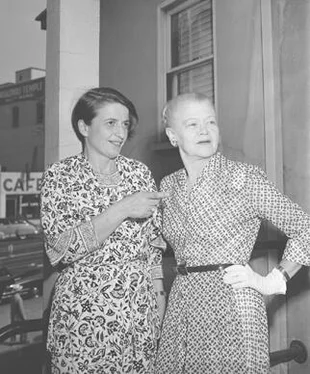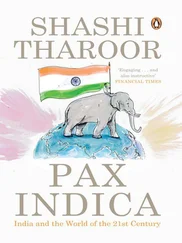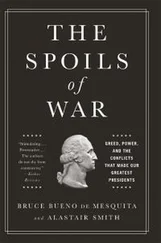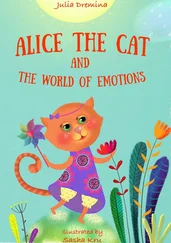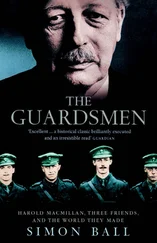Anne Heller - Ayn Rand and the World She Made
Здесь есть возможность читать онлайн «Anne Heller - Ayn Rand and the World She Made» весь текст электронной книги совершенно бесплатно (целиком полную версию без сокращений). В некоторых случаях можно слушать аудио, скачать через торрент в формате fb2 и присутствует краткое содержание. Жанр: Биографии и Мемуары, на английском языке. Описание произведения, (предисловие) а так же отзывы посетителей доступны на портале библиотеки ЛибКат.
- Название:Ayn Rand and the World She Made
- Автор:
- Жанр:
- Год:неизвестен
- ISBN:нет данных
- Рейтинг книги:5 / 5. Голосов: 1
-
Избранное:Добавить в избранное
- Отзывы:
-
Ваша оценка:
- 100
- 1
- 2
- 3
- 4
- 5
Ayn Rand and the World She Made: краткое содержание, описание и аннотация
Предлагаем к чтению аннотацию, описание, краткое содержание или предисловие (зависит от того, что написал сам автор книги «Ayn Rand and the World She Made»). Если вы не нашли необходимую информацию о книге — напишите в комментариях, мы постараемся отыскать её.
Ayn Rand and the World She Made — читать онлайн бесплатно полную книгу (весь текст) целиком
Ниже представлен текст книги, разбитый по страницам. Система сохранения места последней прочитанной страницы, позволяет с удобством читать онлайн бесплатно книгу «Ayn Rand and the World She Made», без необходимости каждый раз заново искать на чём Вы остановились. Поставьте закладку, и сможете в любой момент перейти на страницу, на которой закончили чтение.
Интервал:
Закладка:
There are some remarkable things about The Mysterious Valley . Like Rudyard Kipling’s stories of the same period, it is a romance about civilization and its adversaries. But these are specifically death-worshipping adversaries, a theme Rand was to visit again and again. In her mature fiction and essays, death worship, or “whim-worship,” as she sometimes called it, is associated with antirationalism, anti-individualism, fascism, and collectivism of all kinds—most pointedly, in We the Living , with soul-destroying Russian Communism. The tale can also be read as subtly (but, to a Jewish child, compellingly) anti-Christian, since Kali, the death-dealing Hindu deity the shamans worship, demands a grisly and pointless living sacrifice of noble men. That these men, the story’s heroes, are members of the British upper class would have made it all the more enthralling to Rand. All things British were in fashion with Russians at the time, and Rand had additional reasons for admiring England. On vacation near the Crimean Black Sea a year or two before, she had found the perfect model for her lissome future heroines in a tall, fair, slender, tennis-playing older British girl she developed a crush on from afar. She never forgot this girl, whose name was Daisy, or lost her admiration for the girl’s type of long-legged beauty and fair-haired Anglo-Saxon glamour, which she later compared to that of a movie star. In the years before she had yet learned much about America, Britain came to symbolize the heroic virtues of her inner universe. It was her “ideal country” at the time, she later said.
Then, too, the British officers and the French archaeologist in The Mysterious Valley are unusually analytical for characters in a boy’s adventure story. At every impasse—in the face of terrifying perils—they pause to ask themselves and one another what is the most logical way to proceed. Their insistence on examining every alternative before unerringly deciding on the right one slows down the action comically at times. But the result is swashbuckling punctuated by practical puzzles, which the reader solves alongside the captives and their friends. It is unusual, and one can imagine the nine-year-old Rand—the person who would later describe reason as “one’s only source of knowledge” and “one’s only guide to action”—being as much engrossed by the logical conundrums as by the action itself.
But it was the sexually charged character of Cyrus who fixed the story permanently in her mind. She probably spent hundreds of hours poring over the drawings and descriptions of the dashing hero who for her became the equivalent of an adolescent heartthrob. He was her “exclusive love,” she said, from the age of nine until the age of twelve—that is, until the horrors of the October 1917 Revolution put an end to everyone’s daydreams. He provided an aspirational remedy for her sense of isolation. With Cyrus as her secret lover and perfect soul mate, she successfully moved outside the circle of others’ conventional reality. The parties and social successes that preoccupied her mother, sisters, and cousins were no longer a concern of hers, she later said. She had something better, something higher, something that none of them could see or share. In homage, she would name Kira Argounova, the protagonist of We the Living , for Cyrus, “Kira” being the feminine version of “Kirill,” which is the Russian variant of “Cyrus.” As a mature writer, she patterned her most explicitly erotic male characters after Cyrus, including Howard Roark in The Fountainhead and John Galt in Atlas Shrugged . In 1929, working at odd jobs in Hollywood, she married a studio actor who looked almost exactly as Cyrus did in the 1914 illustrations she remembered. As she approached adolescence, started school, and began to write, her feeling for Cyrus was of “unbearable intensity” and practically all-consuming. She worshipped Cyrus—and she also identified with him, just as she did with Catherine the Great. Her tendency to identify with men and male characters would have interesting implications for the adult Rand’s ability to write more persuasively from a male point of view than any female writer since George Eliot.
It appears to be no coincidence then that, like Catherine and Cyrus—and like Rand’s father during the impending revolution and like Jews throughout Russian history—her most famous fictional characters would be ostracized and even hunted down and punished, not for their faults but for their virtues.
In the summer of 1914, when Ayn Rand was nine and still reading The Mysterious Valley , a series of momentous events occurred, for her, for Russia, and for the European continent. As she and her family set out on their very first trip “abroad”—a word that soon would stir an echo of longing in middle-class Russians trapped by the revolution—the Austro-Hungarian emperor-in-waiting, Archduke Franz Ferdinand, was about to ride into an assassin’s sights. His politically motivated murder would propel Europe into World War I. His killer was a Serbian nationalist who, maddened by the Austrian empire’s annexation of parts of the Slavic Balkans, ambushed and shot the archduke in Sarajevo, Bosnia. Russia was closely allied with its fellow ethnic Slavs in Serbia, and by the end of July 1914, Germany, Austria’s ally, had declared war on Serbia and Russia. Russia reciprocated. France and England entered the conflict on Russia’s side, and Turkey, Russia’s ancient enemy, eventually joined with Austria and Germany. Europe quickly became impassable, and, before the year was out, would be the scene of slaughter such as the world had never seen.
Of course, the Rosenbaums knew none of this in late May or early June, when they set off. With their governess in tow, they embarked on the kind of six-week idyll that every St. Petersburg family who could afford it took: the European tour. They traveled first to what was then the intellectual capital of Europe, Vienna. There, as it happened, they might have glimpsed some of the giants of the age who were in residence that summer: Sigmund Freud, Carl Jung, Ludwig Wittgenstein, Rainer Maria Rilke, Arnold Schonberg—and also Lenin and Leon Trotsky, the architects of the coming revolution. Even Archduke Ferdinand was on hand, conducting official business before he headed off to Sarajevo. From Austria the Rosenbaums moved on to Switzerland and Paris. In a resort in the Swiss Alps, Rand found a rare playmate, an intelligent boy whose family was staying in the same hotel. Setting aside her aversion to exercise, she climbed hills with the boy, picked wild berries, and generally discovered a freedom in the outdoors that forty years later she would commemorate in her descriptions of the happy childhood of Dagny Taggart in Atlas Shrugged . As with everything Rand responded to passionately as a child, she remembered this boy; he later contributed to the character of Dagny’s childhood playmate, the copper scion Francisco d’Anconia. In Paris, Rand and her mother and sisters probably shopped for the season’s fashions, including clothes for Rand’s approaching first school term. Later, she would remember this summer abroad before the war as being what she had always thought existence would be like. This was where real people, intelligent people, lived. The trip confirmed her childish hatred of Russia.
While still on the Continent, the Rosenbaums learned that Russia was at war. They made a dash for London, where, since land travel had now become impossible, they and thousands of other stranded European travelers waited for ships to take them home.
In the few days Rand spent in the city on the Thames, the small, dark Jewish child glimpsed other willowy, fair-haired girls like Daisy, and one day, the story goes, strolling in the West End with her governess, she saw a poster for a theatrical production featuring a chorus of blond girls in plucky English pageboy haircuts. By her account, she went back to her hotel and began to write adventure stories about the girls—her first endeavor at writing. That evening, pencil to paper, she decided to become a writer. Although this memory may be apocryphal, in the service of the adult Rand’s legend, it has the ring of truth. The girls, pictured as bold, modern, beautiful, and vaguely Aryan, were the female counterparts of Cyrus, and his proper consorts. At the time, of course, wanting to be a writer wasn’t unusual for a girl of nine—especially a girl from St. Petersburg, where poets, novelists, and polemicists were celebrated. Whatever the timing, Rand’s decision lasted a lifetime; she very rarely changed her mind about anything important to her.
Читать дальшеИнтервал:
Закладка:
Похожие книги на «Ayn Rand and the World She Made»
Представляем Вашему вниманию похожие книги на «Ayn Rand and the World She Made» списком для выбора. Мы отобрали схожую по названию и смыслу литературу в надежде предоставить читателям больше вариантов отыскать новые, интересные, ещё непрочитанные произведения.
Обсуждение, отзывы о книге «Ayn Rand and the World She Made» и просто собственные мнения читателей. Оставьте ваши комментарии, напишите, что Вы думаете о произведении, его смысле или главных героях. Укажите что конкретно понравилось, а что нет, и почему Вы так считаете.
